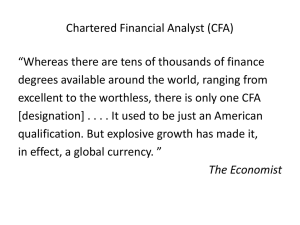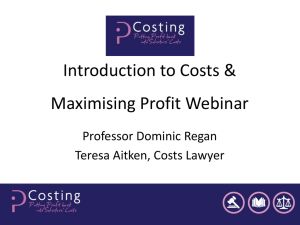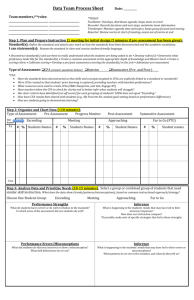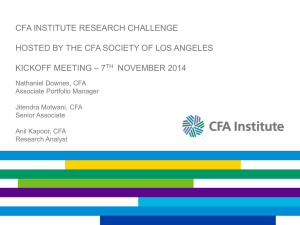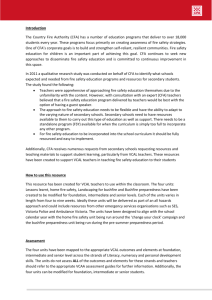Membership, Society and You
advertisement
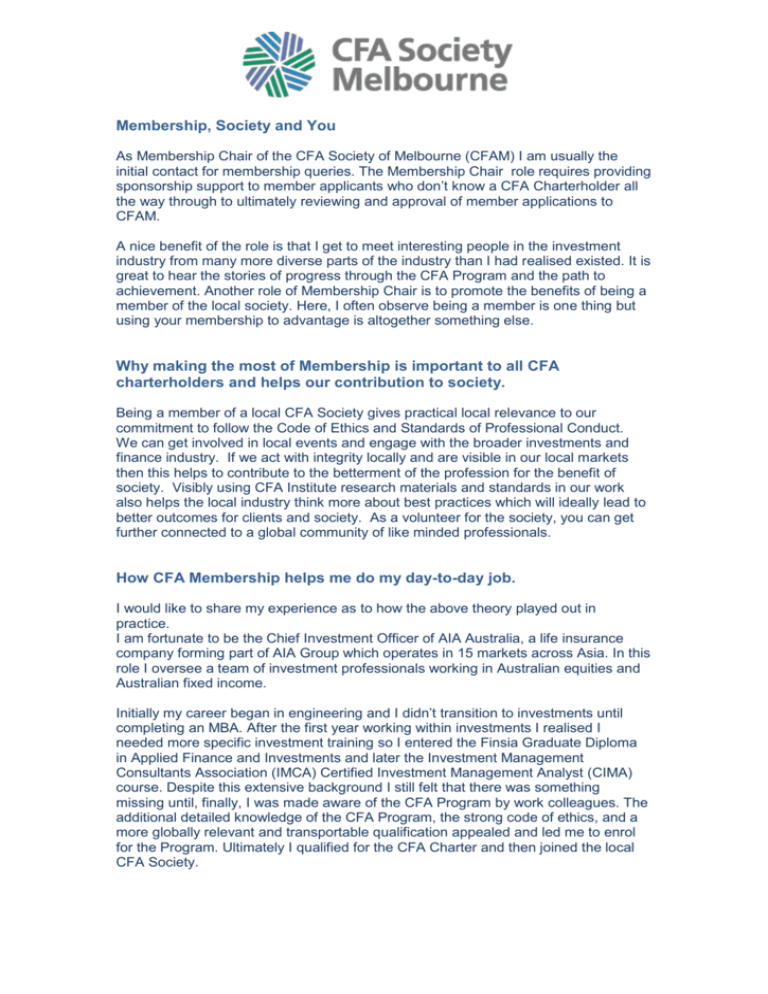
Membership, Society and You As Membership Chair of the CFA Society of Melbourne (CFAM) I am usually the initial contact for membership queries. The Membership Chair role requires providing sponsorship support to member applicants who don’t know a CFA Charterholder all the way through to ultimately reviewing and approval of member applications to CFAM. A nice benefit of the role is that I get to meet interesting people in the investment industry from many more diverse parts of the industry than I had realised existed. It is great to hear the stories of progress through the CFA Program and the path to achievement. Another role of Membership Chair is to promote the benefits of being a member of the local society. Here, I often observe being a member is one thing but using your membership to advantage is altogether something else. Why making the most of Membership is important to all CFA charterholders and helps our contribution to society. Being a member of a local CFA Society gives practical local relevance to our commitment to follow the Code of Ethics and Standards of Professional Conduct. We can get involved in local events and engage with the broader investments and finance industry. If we act with integrity locally and are visible in our local markets then this helps to contribute to the betterment of the profession for the benefit of society. Visibly using CFA Institute research materials and standards in our work also helps the local industry think more about best practices which will ideally lead to better outcomes for clients and society. As a volunteer for the society, you can get further connected to a global community of like minded professionals. How CFA Membership helps me do my day-to-day job. I would like to share my experience as to how the above theory played out in practice. I am fortunate to be the Chief Investment Officer of AIA Australia, a life insurance company forming part of AIA Group which operates in 15 markets across Asia. In this role I oversee a team of investment professionals working in Australian equities and Australian fixed income. Initially my career began in engineering and I didn’t transition to investments until completing an MBA. After the first year working within investments I realised I needed more specific investment training so I entered the Finsia Graduate Diploma in Applied Finance and Investments and later the Investment Management Consultants Association (IMCA) Certified Investment Management Analyst (CIMA) course. Despite this extensive background I still felt that there was something missing until, finally, I was made aware of the CFA Program by work colleagues. The additional detailed knowledge of the CFA Program, the strong code of ethics, and a more globally relevant and transportable qualification appealed and led me to enrol for the Program. Ultimately I qualified for the CFA Charter and then joined the local CFA Society. For me, being a member is important as it gives me access to a common knowledge base, code of ethics and standards of practice. It is no coincidence that almost all of my staff have enrolled in or completed the CFA Program. As a manager of people, the common code of ethics is the most important facet for me, both internally as AIA has an ethical question component to our hiring procedures, and externally as I seek to have better standards of practice that put our clients first. For where I work in the Insurance business the clients are both policyholders and shareholders. Practically the CFA Institute has also provided me a wealth of valuable Codes, Standards of Practice and Guidelines that I have used for many areas of my role. I have referred to these Standards in reports to management and Board committees, and encouraged my colleagues to use them as well. Check them out at http://www.cfainstitute.org/ethics/codes/Pages/index.aspx which is under the Ethics and Standards section (http://www.cfainstitute.org/ethics/Pages/index.aspx). You will be amazed by the depth of knowledge. If anything, there can be an overwhelming amount of information. There are different ways to access parts of it such as in the Practice Management section at http://www.cfainstitute.org/mycfa/member/tools/practice/Pages/index.aspx which has the ‘Elements of an Investment Policy Statement (IPS)’ that I have used recently. Having access to these codes and standards, with the assurance that they have come about by input from many leading investment professionals significantly lowers the cost of business for AIA in developing the most appropriate practices for our investment functions. We can rapidly research an area, and apply the best features to our own policies and procedures. I have used the Trade Management Guidelines and the Asset Manager Code of Professional Conduct amongst others. The CFA Institute Vision and Values You may not be aware of a subtle but important change to the CFA Institute Vision and Values this year. The Vision and Values is now stated as: ‘Our mission is to lead the investment profession globally by promoting the highest standards of ethics, education, and professional excellence for the ultimate benefit of society.’ So what has changed recently? Note the last six words that have been added: ‘for the ultimate benefit of society’ What’s Next? We all have a responsibility to do better for society. This is even more important as the broader finance industry, with continued reputational failings, is still finding difficulty winning back trust from broader society. Have we as an industry not learned anything? So I challenge you to think of how you will contribute today, this year, and over your career to helping winning back that trust. Start small, for example just by having a look at the depth of standards and guidelines, and applying one or two of these to what you do. Commit to improve, initially for yourself and your organisation, and we will all help contribute to a more responsible and sustainable role for finance and investments in society. I hope to meet many of you in person in the future. I will ask what you are doing to make the most of membership for you and for society. Graeme Bibby September 2012
